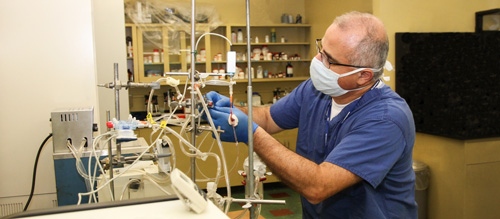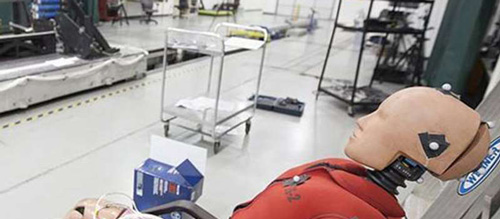World-Class Research Surrounds You
Designed to facilitate the transfer of new knowledge into innovations directly impacting patient care, and featuring greater than 20 dedicated laboratories, along with clinical partners such as Versiti Blood Center of Wisconsin, Children’s Wisconsin, Zablocki VA Medical Center, and Froedtert Hospital—the Marquette University and Medical College of Wisconsin Joint Department of Biomedical Engineering supports student education with a rigorous research practice that offers a dynamic range of novel opportunities for the world's next generation of biomedical engineers.
Research Themes
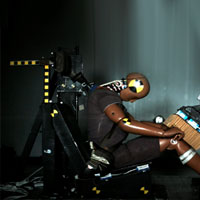 Biomechanics & Rehabilitation Bioengineering
Biomechanics & Rehabilitation Bioengineering
Simply put, Biomechanics is the study of the structure, function and motion of the mechanical aspects of biological systems. When applied to the human body, biomechanics describes how muscles, bones, tendons, and ligaments work together to produce movement under neuromuscular control.
Learn more about Biomechanics & Rehabilitation Bioengineering
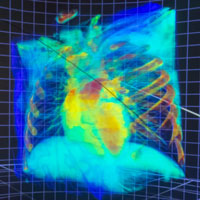 Biomedical Imaging
Biomedical Imaging
The Biomedical Imaging Engineering research groups in the Joint Department of Biomedical Engineering focus on developing new techniques to noninvasively visualize the structure and function of living objects for clinical analysis and medical intervention. Ongoing research includes advancements in technologies that visualize at the subcellular to whole-body levels.
Learn more about Biomedical Imaging
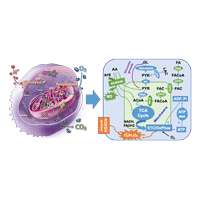 Computational Systems Biology & Medicine
Computational Systems Biology & Medicine
Computational Modeling is the practice of using computer models and systems to simulate complex biological processes. Computational modeling has many applications in medicine, which include improving our understanding of human physiology, visualizing and interpreting experimental data, and designing novel therapies.
Learn more about Computational Systems Biology & Medicine
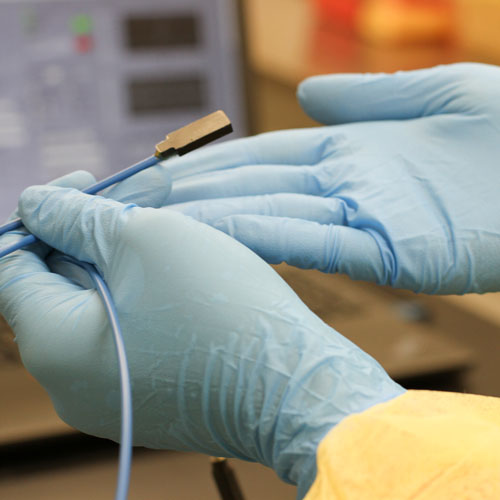 Medical Devices & Bioinstrumentation
Medical Devices & Bioinstrumentation
Medical devices are at the heart of biomedical engineering, and faculty in the MU-MCW Department of Biomedical Engineering have proficiency in instrumentation, biomaterials, medical device testing and design, and clinical and regulatory expertise. This broad base of skills and expertise positions our department at the forefront of medical device innovation.
Learn more about Medical Devices & Bioinstrumentation
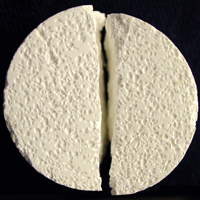 Molecular, Cellular & Tissue Engineering
Molecular, Cellular & Tissue Engineering
Tissues may become damaged due to injury or disease. Molecular, Cellular, and Tissue Engineering is a research specialization in Biomedical Engineering which seeks to repair or replace damaged tissues, such as heart valves, blood vessels, skin, cartilage, or bone by gaining understanding of the molecular and cellular mechanisms involved in the damage and regeneration.
Learn more about Molecular, Cellular & Tissue Engineering
 Neural Engineering & Neurorehabilitation
Neural Engineering & Neurorehabilitation
The Neural Engineering and Neurorehabilitation research groups in the MU-MCW Department of Biomedical Engineering focus on the brain, the nervous system, and motor control. Researchers use a variety of engineering tools to analyze neurological function and with engineering solutions for problems associated with neurological pathologies, disabilities, limitations, and dysfunction.
Learn more about Neural Engineering & Neurorehabilitation
Learn more about Research at the Marquette-MCW Joint Department of Biomedical Engineering
Found at the cross-section of our six distinct research themes and 13 featured clinical applications, Research Tracks are provided to help students drive their academic experience, ensuring they are well prepared to pursue their preferred line of interest upon graduation.
The Joint Department of Biomedical Engineering features over 20 laboratories dedicated to generating new knowledge and engineering novel applications to the world's modern healthcare challenges.
Central to our core principles of fostering collaborative research practices in the service of humanity, publications accredit the knowledge we have generated while rapidly and effectively disseminating new ideas to the people who need them most.


 Biomechanics & Rehabilitation Bioengineering
Biomechanics & Rehabilitation Bioengineering Biomedical Imaging
Biomedical Imaging Computational Systems Biology & Medicine
Computational Systems Biology & Medicine Medical Devices & Bioinstrumentation
Medical Devices & Bioinstrumentation Molecular, Cellular & Tissue Engineering
Molecular, Cellular & Tissue Engineering Neural Engineering & Neurorehabilitation
Neural Engineering & Neurorehabilitation